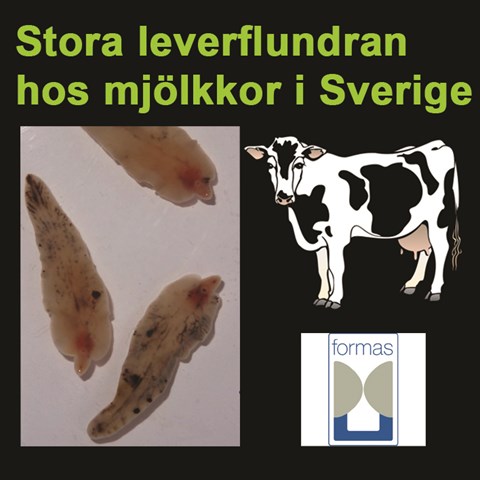The common liver fluke in dairy cattle – its infection dynamics and impact on milk production (LIFLUMILK)

The common liver fluke (Fasciola hepatica) is the causative agent of a production-limiting parasitic disease (fasciolosis) affecting grazing livestock worldwide. Increasing liver fluke prevalence in dairy cattle has recently been shown in many European countries, including Sweden. Although, F. hepatica infection in dairy cattle is mainly subclinical, it is generally accepted that it can have negative impacts on milk yield and milk quality, as well as reproduction and carcass composition.
Control of liver flukes in livestock is often based on annual mass deworming of the animals during the housing period. However, due to concerns about residues in milk, treatment options for dairy cows are limited compared with those for beef cattle and sheep. Although impacts of liver flukes on dairy production are under debate, the costs of this parasitic disease and the benefits of deworming have never been evaluated under Swedish conditions.
In this project we will: 1) investigate the epidemiology of liver flukes in dairy herds with robotic milking, and 2) develop and validate a targeted selective treatment strategy of dry cows following proper diagnosis of the infection. Furthermore, we will quantify the impacts on milk production. Increased knowledge of how the common liver fluke is spread and controlled in dairy herds will inevitably contribute to more effective parasite control methods that will provide improved animal health and increased economic returns.
Financier: FORMAS (2017-2019)
Participants: Project leader - Adam Novobilský (BVF, SLU)
Other participants: Johan Höglund (BVF, SLU), Bengt-Ove Rustas (HUV, SLU), Moa Skarin (BVF, SLU)